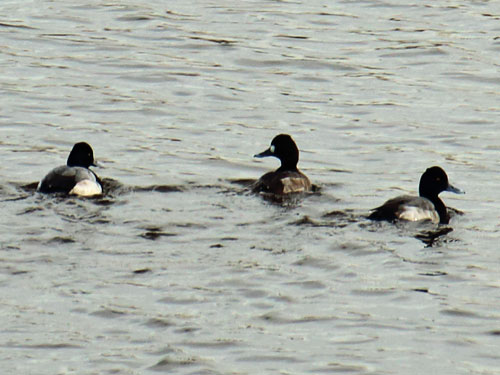
In early January 2020, aerial survey teams of pilots and biologists from the Maryland Department of Natural Resources (DNR) made visual estimates of the ducks, geese, and swans along most of the state’s Chesapeake Bay, Potomac River, and Atlantic coast shorelines.
This year, the teams counted about 627,000 waterfowl, which was higher than the 566,300 birds observed during 2019, but lower than the five-year average of 738,440 birds.
“The abundance and distribution of wintering waterfowl is influenced not only by the annual changes in population size, but also the weather conditions during migration and throughout the winter,” said Wildlife and Heritage Director Paul Peditto. “Moderate winter weather up and down the east coast has allowed most waterfowl species to remain spread out across Maryland and our surrounding states.”
Overall, the number of dabbling ducks was higher than last winter, while fewer diving ducks were observed than in the 2019 survey. Biologists also counted more Canada geese this year than last year.
Following 2018’s record low hatch, Atlantic Population Canada geese benefited from normal spring weather conditions on their nesting grounds in 2019, leading to average gosling production.
2020 Midwinter Waterfowl Survey Results (rounded to the nearest hundred)
Species | Quanity
Mallard 56,000
Black Duck 21,000
Gadwall 10,800
Widgeon 1,100
Green-winged Teal 2,000
Northern Shoveler 300
Northern Pintail 1,800
Total Dabblers 93,000
Redhead 10,600
Canvasback 46,900
Scaup 59,000
Ring-necked Duck 3,000
Goldeneye 300
Bufflehead 11,400
Ruddy Duck 18,500
Total Divers 149,700
Scoters 5,700
Long-tailed Duck 200
Mergansers 2,300
Total Ducks 250,900
Brant 900
Snow Goose 40,900
Canada Goose 327,200
Tundra Swan 7,100
Total Waterfowl 627,000
The Midwinter Waterfowl Survey has been conducted annually since the early 1950s. The Maryland survey results are ultimately pooled to provide a measure of the distributional changes and long-term trends of waterfowl wintering in the Atlantic Flyway.
source: Maryland Department of Natural Resources
Leave a Reply
You must be logged in to post a comment.